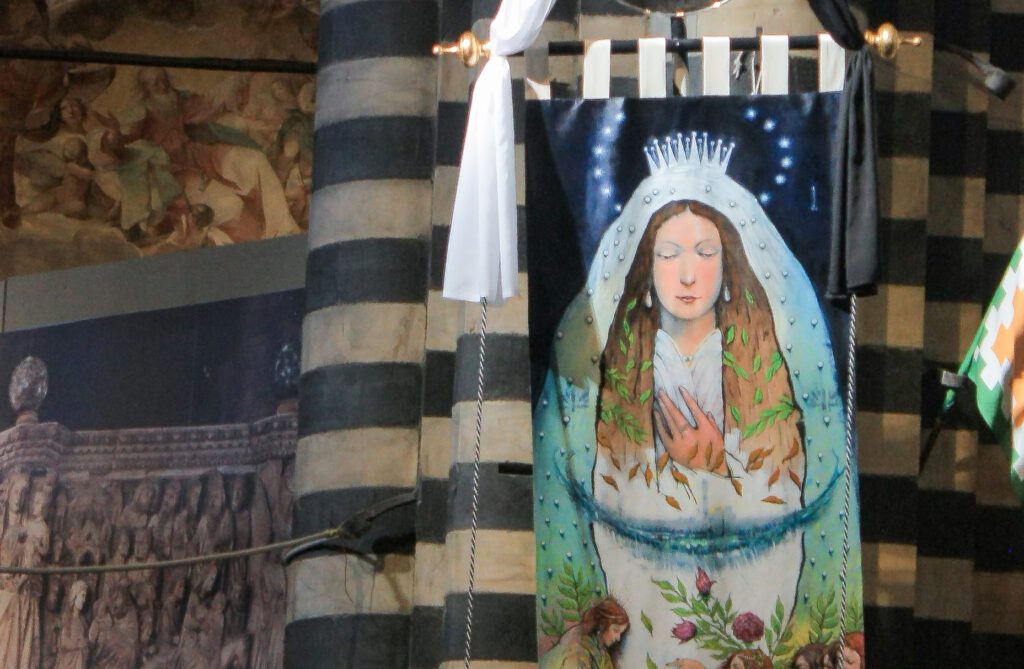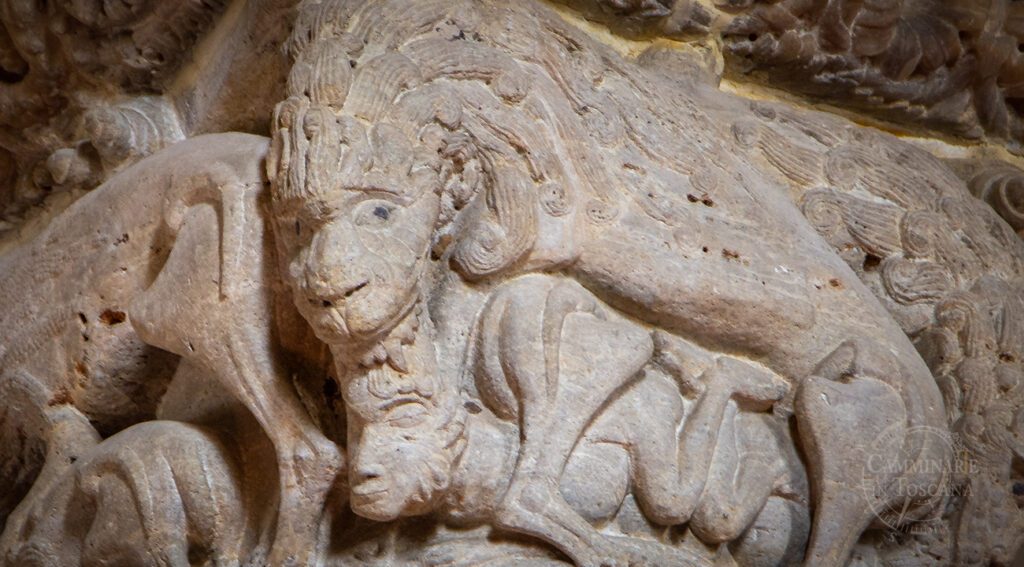
What to see in one day in Florence
Among the cities of art to visit in Italy for the holidays, Florence is always a destination that stands out for its great charm. However, the many monuments and places to visit in the town of Giglio are so many and all worthy of interest that tourists are often embarrassed about which monuments to see and which not, especially if there is not much time available and you want to avoid racing so as not to miss anything. As a general rule, the best advice is to concentrate the time on a few places to see but enjoy them in full. Here you have a small guide on what are the must-see things to discover in Florence in one day.
If you arrive from Santa Maria Novella train station or from the terminus tram of Villa Costanza (recommended stop “Alamanni Stazione”), what you could immediately see, without having to walk a long way, is Santa Maria Novella square. The church overlooking the square, extolled by artists and musicians – even in recent times – shows a refined façade that mirrors the Renaissance architectural ideals. This is a fifteenth-century Florentine work, created by one of the most important personalities of the time, Leon Battista Alberti, a fundamental character for the development of the ideals of the Renaissance applied to the urban planning of the city, ideals enunciated in a treatise written by him. bichrome marble shows very special symbols on the façade, such as an armillary sphere, a sundial, a hidden sundial and a sun on the tympanum. From these signs it is clear that this church has a much more complex artistic story to be told.
The square in front of the church has two obelisk-shaped columns on the southeast axis that create an ellipse that once upon a time worked as a track for equestrian races that were held to entertain the Florentines. Note the four bronze turtles under each column, a symbol linked to one of the Florentine Grand Dukes of Casa Medici. At the bottom of the square, on the southeast side, an elegant Brunelleschi architecture houses in this day the Museo del Novecento, one of the most important contemporary art museums in Italy. To go to the core of the town, take Via del Sole. In less than five minutes you will be in Via Tornabuoni where you can admire the bulk of Palazzo Strozzi, once the residence of the homonym family and now Strozzi Art Foundation’s see, which organizes art exhibitions that are always of great importance (in this period the exhibition on Verrocchio, master of Leonardo da Vinci (info on www.palazzostrozzi.org).

Cathedral of Santa Maria del Fiore, Florence
The free visit of Palazzo Strozzi’s courtyard allows you to outline a Renaissance palace picture of the Florentine fifteenth century palace style, whose prototype can be traced in the palace of the most famous family of Florence at the time, Medici Palace. Continuing towards Piazza della Repubblica, go left on the wide Via di Calimala, today one of the most inland shopping streets in the town. The wide road will lead you, in no time at all, to the great complex of the Duomo.
The Cathedral of Florence
The device memory of your smartphone will not suffice for all the photos you will want to take in this corner of Florence for the majestic view of the Duomo before you. At a superficial glance, it seems that the great architects of the past who built the complex did not measure well the distance between the church and the Baptistery which partly conceals the view of the majestic façade of the church. Actually, the constructive vicissitudes of the buildings complex were much more complex than what can be perceived at first glance. What is one of the biggest cathedrals in the world has a fascinating story that deserves to be thoroughly investigated ….
In front of the east façade of the Baptistery you will admire the faithful copy of the “Gate of Paradise”, so renamed by the great Michelangelo Buonarroti. Also on this side of the Baptistery, two porphyry columns are what remains of the ancient alliance between Florence and Pisa in the 12th century.

The Rape of Sabine Women, Giambologna, 1574-80, Loggia dei Lanzi, Florence
Once you have admired the Cathedral, you can get the way to reach Piazza della Signoria, but instead of getting there for the classic Via dei Calzaiuoli – perhaps the most touristic street in Florence – I suggest you doing it from Via dello Studio.
Passing through the picturesque streets like via Dante Alghieri and Via del Corso, you will be able to appreciate the real Florence, the one made up of small shops and delicatessens where local products are still served. From Viale dei Magazzini you will arrive in Piazza della Signoria from the north side. Moving towards the main façade of Palazzo Vecchio, your eyes will be filled with the beauty of the masterpieces of art that are preserved here, like the fountain – just restored – by Bartolomeo Ammannati, a copy of Michelangelo’s David, Donatello’s Judith, the Perseus by Benvenuto Cellini, the Rape of the Sabine Women by Giambologna. Each of these statues has a long story that deserves to be told.
Palazzo Vecchio and Piazza della Signoria
Palazzo Vecchio has a courtyard which, due to the beauty of its sixteenth-century decorations, deserves to be seen the entry into this area is free; the presence of the representations of German and Austrian cities in this atrium is due to the celebration of an important wedding in the history of the Medici family. If, on the other hand, you are curious to discover the treasures that are kept inside the Palace, not to mention its secrets, such as the reproduction of Michelangelo’s David with the severed head, or the famous hidden fresco by Leonardo da Vinci – suggested by inscription left by Vasari “search and you will find” – you must absolutely take the ticket to visit the Palace.
To the right of Palazzo Vecchio is the bulk complex of the Uffizi Gallery. As it is well known, this is one of the most beautiful museums that the world envies us, if only for its spectacular location between Palazzo Vecchio, the Arno and Ponte Vecchio that is one of the must-see things to discover in Florence. By reaching the most famous bridge of the town, you will be dazzled by the glitter of the jewels displayed in the windows of these exclusive goldsmith shops. The bridge, which today is the stopping point for many tourists who stop to take panoramic photos or selfies, hides many mysteries, starting with the secret passage that overlooks the goldsmith shops, a passage built in ancient times for a specific purpose.

The Venere Italica, Antonio Canova, 1807-08, Galleria Palatina, Florence
Di là d’Arno
You are now one step away from the left bank of the Arno, the area that the Florentines call “di là d’Arno” (beyond the Arno). That is the Florentine area I love most; that area is the most genuine, authentic, the one that florentines themselves love most to spend their free time, also because it is not that invaded by tourists who, instead, flock to the other side of the river.
Di là d’Arno is definitely one of the must-see things to discover in Florence as it is where there are many craft workshops in which high quality products are manufactured; here you will find gorgeous antiquity shops where to buy works of exceptional rarity; here you will find small but supplied auction houses, with highly sought-after works of art bought from expert collectors.
Here you will find many wine shops and taverns that have kept a rustic appearance in their rooms. In a nutcase, have a trip there and you will not regret on it.
In this other Florence you will be able to visit monuments of particular importance, such as the Santo Spirito Monastery, whose church is one of Brunelleschi’s most original projects. Inside the sacristy of the church there is a magnificent wooden crucifix attributed to Michelangelo.
Santo Spirito, one of the must-see places of Florence
Not far from the Santo Spirito Square, which with the series of wineshops is officially the seat of the Florentine nightlife — what means that is one of the must-see things to discover in Florence — and where you find Palazzo Pitti that houses the Galleria Palatina. Here green lovers can enjoy an extraordinary example of a late-Renaissance garden which is the Boboli garden, one of the most beautiful Italian gardens for its scenographic arrangement between Boboli hill and Palazzo Pitti’s back. Inside the Palace the Galleria Palatina is housed. It stands out for its rich paintings collection and for maintaining the original picture gallery’s layout given to it by the Medici Grand Dukes in the eighteenth century.

The view of Florence from Piazzale Michelangelo
If you are also curious to see what is a striking place for the national history, the Basilica of Santa Croce, a refined florentine church as well, is definitely worth a visit. Inside the church, a renowned burials series is preserved; among these we have the ones of Machiavelli, Galileo, Michelangelo and Rossini. The Church also preserves chapels of great fascination, such as those painted by Giotto and his scholars, or like the chapel where the French writer Stendhal was struck by the syndrome which toke his name after.
If you are great sculpture lovers, you cannot miss a visit to the Medici Chapels, where the fascinating sculptures – partly unfinished – by Michelangelo, are kept, or the Accademia Gallery, where you can admire the artist’s original David, transported here in the nineteenth century. Inside the museum an isle introduce visitors to the sight of the beautiful Buonarroti’s marble sculpture. Thanks to its scenographic effect, it confers particular emphasis to the great statue, considered the maximum expression of art from the historian Giorgio Vasari. Since the work is more than five hundred years old, it should be noted that it has not passed unharmed over the centuries and still preserves the signs of the time, as well as to stormy events that deserve to be discovered.
Another copy of Michelangelo’s David
In addition to the copy in Piazza della Signoria, another important copy of the David is kept in Florence, this time in a bronze version, and it can be seen on the square that bears Michelangelo’s name. The latter is one of the most sought after stops by tourists; Piazzale Michelangelo in fact rises in a point that is one of the must-see things of Florence and where you can appreciate a breathtaking view over the whole city; the selfies you will take from this beautiful panoramic terrace will be unforgettable and will arouse the envy of the followers on your social accounts.
What I have reported here is a brief guide of the unmissable things to see in Florence if you have little time. However, since we are talking about an extraordinary city, full of places to see and secrets to discover, enjoying the beauty of the town through a guided tour becomes the proper option to know the must-see things to discover in Florence in one day ⟣



